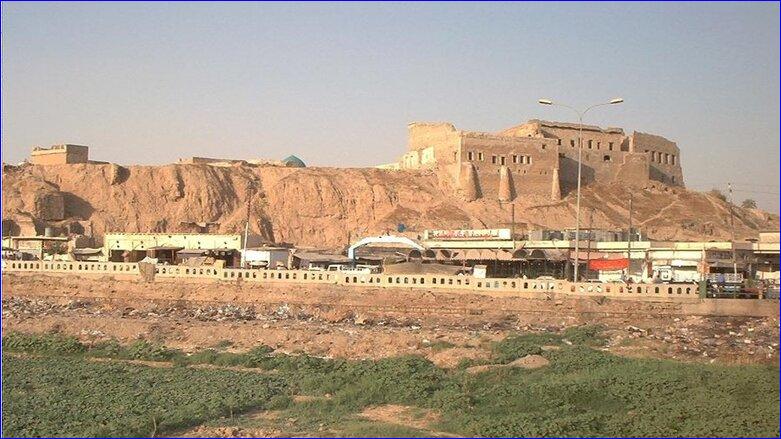


 Goran Sabah Ghafour/K24)
Goran Sabah Ghafour/K24)
The citadel boasts many unique structures, one of which is its famous 'red church' built in the pre-Islamic period. The church has a marvelous mosaic and is often called the 'Jewel' of the citadel.
Located in the city's center, by a plateau across the dried Khasa River, the citadel stands on an artificial mound 130 feet high.
"I like it, I am proud of it, at the same time, I am sad when I see it because now it should have been a crowded place full of visitors," said Talhat Kareem, a local from Shorijawa neighborhood in Kirkuk.
"This citadel needs attention, needs service, and the government should make it stand out not only in Iraq but the whole world."
Another aspect of the citadel, which amazes scholars, is the tomb of Prophet Daniel.
"Having Prophet Daniel's tomb in Kirkuk Citadel means a lot," said Yousif Rashid, a historian. "It signifies that this site was a Jewish site, which adds to the richness of this landmark."
The citadel is believed to be the first cemetery in Kirkuk. Many respected Kirkukis are buried near it. To this day, the most popular day of the week to visit these tombs is Saturday, which according to Rashid, is another reminder that this site was originally Jewish.
People revere the grand mosque inside the citadel. That mosque includes arches, pillars, and two domes in addition to its three minarets that date back to the time of Mongolian invasion.
"The mosque also reportedly contains three other tombs believed to belong to the companions of Daniel, Hananiah, Mishael, and Azariah, or as they are known by many, Shadrach, Meshach, and Abednego," added Rashid.
Scholars agree that Timur visited Kirkuk Citadel in 1393 during his military expedition. The citadel survived numerous historical wars.
"This citadel is proof that this city is so precious," Kareem said. "It was once the house of all people, all religions and all nationalities."
There have been international efforts to reconstruct parts of Kirkuk's citadel in recent years.
"UNESCO is involved and has been actively overseeing renovations since 2010," said Rashied. "The goal is to restore its glory.
"It has so many things to be fixed such as the strong rampant with 72 towers around the 72 streets and the two entrances to the citadel, which were all built by King Seleucus I Nicator," he added.
Other significant sites in the citadel include the remains of a Chaldean Church and the Qaysari Bazaar. The latter is the most artistic site there. Qaysari has a long corridor with two gates on both sides, housing over 300 shops.
Though there are many dilapidated areas in the citadel, it is still accessible to the public. The Kurdish people celebrate Newroz each year in the citadel.
On the northwest side of the citadel is the Citadel Garden, a public park, and one can still go to the cemetery and visit the tombs and shrines of Daniel and his companions.

or register to post a comment.